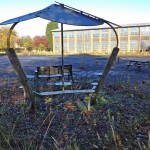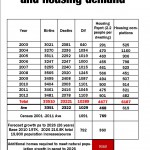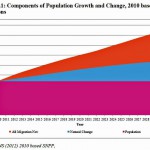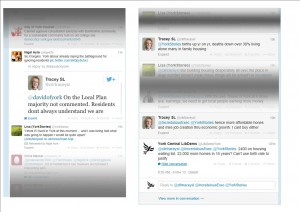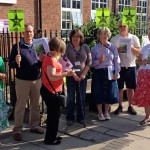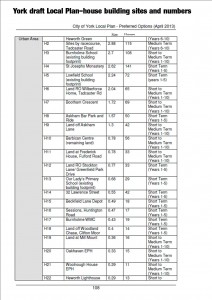
Site capacity for new homes – draft Local Plan. click to enlarge
Labour Councillor Dave Merrett seems to have overstepped accepted guidelines when welcoming a planning application for the Our Lady’s school site.
He was quoted in the local paper as supporting a plan to build 56 homes on the site – almost double the number allocated in the Local Plan that Cllr Merrett approved in the spring.
If approved at the meeting on 21st November, the proposal would mean that the green space, school nature reserve and children’s playground will all be lost.
Normally executive Councillors avoid commenting publicly on planning applications once they have been submitted. They allow normal consultation with residents to take place before a cross party planning committee meeting decides on the merits of each proposal.
A public intervention by an executive Councillor could be deemed to be putting undue pressure on the planning officers who work in his department and who will author reports recommending approval or rejection of an application.
Officials are understood to have said already that the density on the development – at 82 homes per hectare based on the existing built footprint- is in excess of what would normally be permitted in a sub-urban location.
Meanwhile the Council Leader is also interfering in the planning processes.
Following on from his public opposition to converting unused shops into residential accommodation, he told the last Council meeting, when questioned about the higher number of housing units coming forward on brownfield sites that,

sessions site
“the important distinction between the positions of the Liberal Democrats, and the Conservatives it has to be said, is that the other parties believe those living in central wards should have housing built on any spare piece of land anywhere near them and outer wards should continue to enjoy protection against any development anywhere near them”.
“The truth is housing should be built in both central and outer areas where it can be shown to contribute to tackling the city’s housing crisis at the same time as protecting residents’ local amenity”.
In fact over recent months it is central area sites that are seeing high densities proposed with Our Lady’s school only the latest in a long line which includes the former Press offices in Walmgate, the Burnholme club and several dozen others.
The Council Leader may, however, be confused about what constitutes “central wards”.
——————
NB. The Planning committee will consider next week a proposal to build 59 homes on the former Sessions site on Huntington Road. Of these 20% will be “affordable”
The density of the proposed development is just over 32 dwellings per hectare, and would be more densely developed than the surrounding residential areas. However this figure appears to be in conflict with the figures shown in the draft Local Plan.
The draft Local plan showed only 17 homes being built on this (0.47 hectare) site

